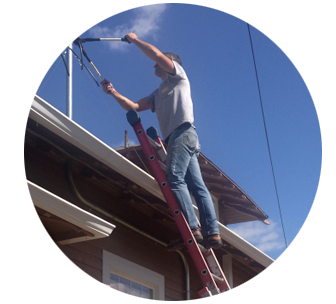Are your quotes kept where everyone (authorized) can find them? How do you track revisions? How quick do you get your quotes out? An efficient and reliable quoting process will keep you on the competitive front edge, win more bids and improve job profitability.
Inefficient and unreliable quoting systems are top of the pain list for many of the companies that we work with. It’s one of the first disconnects in the cycle of business and responsible for significant loss industry-wide. Here are the most common pain points.
- Slow quoting.
- Quoting errors.
- Double entry.
- Poor job setup.
For many small businesses, the person, or at least one of the people creating quotes is the owner of the business. The result is that the quoting process has evolved out of whatever manual process the business owner came up with when he/she started the company. For businesses that started before the technology boom, quoting processes were built upon spreadsheets, Word documents and whatever system of organization or personal management process worked at the time. This, in fact works great at the start and I have been more than impressed by some of the DIY systems that people have come up with.
The problem is that growth eventually requires connectivity or any quoting that has been developed will be become the bottleneck of the company. Here are some of the challenges that arise.
No Shared Access
Quotes get stored on personal hard drive or office servers. The problem arises when someone other than the creator of the quote needs to access it. If the quote creator is out at a jobsite, out sick, on vacation or simply unavailable, other team members have limited to no ability to assist customers or perform any other actions. In the end, progress is halted or risky guesswork takes place.
In today’s competitive market, a shared location, preferably with web access is almost a must. Companies that quote quickly, efficiently and accurately are winning the bids by being able to create, access and share quote information internally and remotely.
Version Control
Have you ever sent the wrong version of a quote to a customer by accident? How do you track revisions to quotes? This, combined with No Shared Access above can create a double-whammy in the dysfunctional quoting arena. This scenario that plays out most frequently is – you were out, I couldn’t find the quote so I texted you and you told me where to look. I went in and found it but it was the wrong revision. I didn’t know that and sent the wrong one out.
A proper quoting system includes a version tracking system that organizes and indexes multiple versions of the same quote together while preserving each individual version.
Double Entry / Missing Data
The quote-to-job conversion process is a major source of inefficiency for thousands of contracting companies, especially where there is a manual or isolated quoting process. Consider this scenario. An administrator converts about 10 jobs per day from active estimates. The estimates were created as Word docs and must be re-typed into their job database. Each one takes an average of 12 minutes. The administrator also spends about an hour per day tracking down missing details like zip codes, phone numbers, job contacts and other information required in their database. The total time drain is 3 hours per day. At her wage of $18/hr the annual cost to the company is about $14,000/year which is 37% of her salary.
Imagine this equation as a two-click process. The administrator sees an alert that a quote is sold. She clicks “convert to job”, reviews the approval screen and confirms the information is accurate. This takes about 15 seconds. Also, because the quoting process is integrated with their customer database, zip codes, available job contacts and other details are also automated or have a quick search feature in the system. Invoicing instructions and other potential requirements are also triggered automatically from the system.
Now, one could argue that this is a salaried employee and that administrative work is what the employee is paid to do anyways. However, in the world of a successful and growing business, every minute spent not doing redundant data entry is a minute that could otherwise be spent contributing to the growth of the company. This includes customer service or inside sales calls, sales support, social media posts, and other productive tasks. Consider also that using their currently inefficient process, when business grows to 20 orders per day they will most likely be hiring an additional employee that they otherwise would not have to.
Streamlining the sales and quoting process is often the first on the list of targets that our customers present to us. Dialing-in your sales process creates a stream of connectivity, consistency and efficiency that spills forward into scheduling, tracking and eventually accurate billing. Integrating the estimating details also establishes a benchmark for performance metrics that will make your estimates more reliable and competitive.

